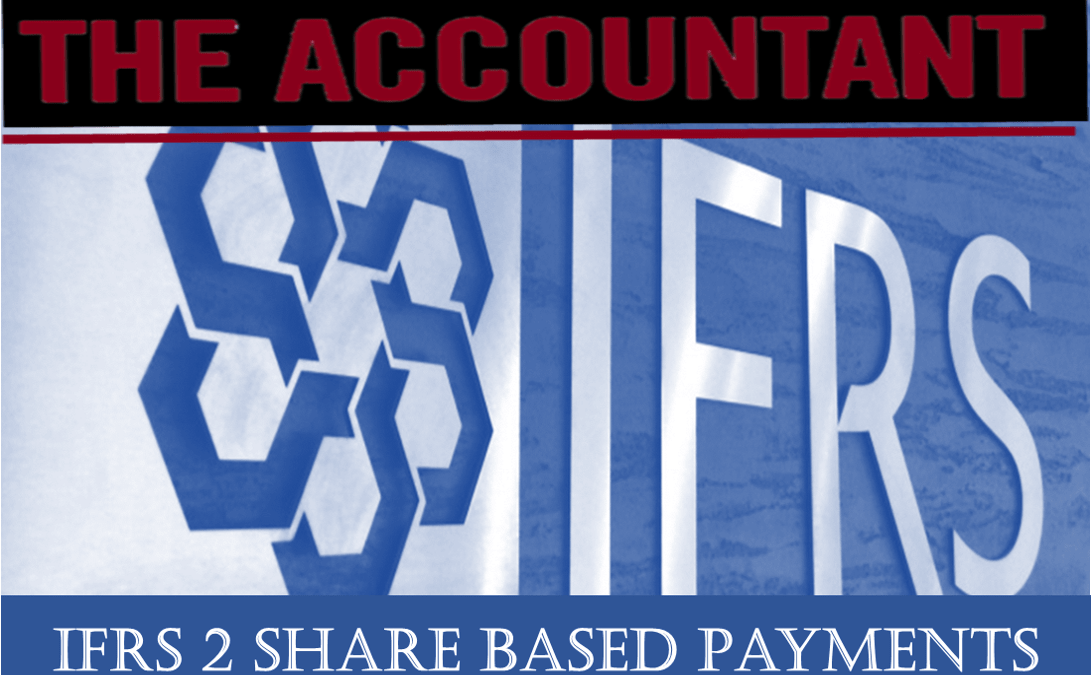IFRS 2 -Share Based Payments
By Tom Clendon, ACCA SBR online lecturer, UK
When it comes to accounting for equity settled share based payments, there are a number of confusing issues.
One is how the numbers are calculated when staff leave.
A second confusion can arise when the issue relates to a business combination.
Equity Settled Share-based Payments Issued to Staff
Equity settled share-based payments that are granted to staff are designed to act as an incentive. As such these options to subscribe to the company’s shares at a fixed price in the future are part of their remuneration.
This is why they are written off against profit – even though there is no cash outflow for the company. The expense is based on the value of the options at the grant date.
As with all equity instrument issued, no subsequent changes in this value are captured or recorded. This value is then charged to profit and loss over the qualifying period, based on the current number of employees expected to qualify at the vesting date.
1-The problem of the current number of employees expected to qualify at the vesting date
At each reporting date it may be necessary to revise the current number of employees expected to qualify at the vesting date. The number of employees expected to qualify at any time is the actual number at the reporting date less expected departures going forward (not the starting number less original estimate).
Simple Example
This estimate of the number of employees expected to qualify is not a problem if none are expected to leave and indeed none actually leave. 100% of the value of the options will be charged over the qualifying period.
Let’s consider a four-year scheme with value of options at the grant date of $400,000. In this case the annual charge would be $100,000 and after two years the accumulated equity would be $200,000. Simple.
The challenge
The challenge arises if – for example – in a similar four-year scheme the total value of options at the grant date were $400,000 and there were 100 employees of which 10 were expected leave annually.
However ,IF after one year, five employees have actually left then at year 1 the estimate of the numbers expected to qualify at the vesting date will be
Year 1 (100 – 5 – (3 x10)) = 65/100 (65%)
Meaning equity required and the expense of the first year would both be
$400,000 x 65/100 x 1/4 = $65,000
Year 2
If then during year 2, twelve leave (not the expected 10) then the revised number of employees expected at the vesting date now becomes
Year 2 (100 -5 – 12 – (2×10)) = 63/100
Meaning that the equity required at Year 2 would be $400,000 x 63/100 x 2/4 = $126,000
And with a bought forward of $65,000 from equity in year 1, this means that the PL charge for Year 2 would be the difference, the increase in the equity of $61,000
2- Options Issued as part of a Business Combination = Equity settled share-based payments issued as Replacement Awards
This article assumes that you are basically familiar with IFRS2 Share based payments and is looking at a twist, which is how to account for options issued in a business combination.
In a business combination the consideration paid by the acquiror for the controlling interest in the subsidiary must be recorded at the fair value of the consideration given. When the parent simply pays cash for the equity interest in the subsidiary then there are no complications or measurement issues.
However, where the subsidiary has previously issued share options (equity settled share-based payments) to its staff and by the acquisition date these have not vested, then the parent will have to buy out this equity interest as part of its purchase consideration. This can be done by the parent issuing new replacement options.
The accounting challenge will then be to analyse the value of these new replacement options and split them between compensation for the pre-combination interest and any post-combination incentives.
Splitting the Value between Pre and Post
The amount of the new replacement options that represent pre-combination services are capitalised as part of the cost of the investment as they relate to a payment for an equity interest in the subsidiary.
The amount of the replacement options that is pre-acquisition will be the proportion of the value of the original options that has been completed.
Whilst the amount attributable to post combination services will be spread through the profit and loss as an expense over the vesting period because that will relate to future employee service.
But this is all best further explained and understood in a worked example with some figures thrown in.
Example Wang and Hiren
Wang has just acquired all the equity shares in issue of Hiren for $100 million paid in cash. As 100% of the shares were acquired there will be no non-controlling interest.
Three years ago, Hiren had granted equity settled share payment awards to its staff. These were due to vest after five years i.e. in two years’ time. Accordingly, in addition to paying $100 million cash for the shares, Wang issued replacement equity awards to the employees of Hiren with a fair value of $51 million and that will vest in two years after the date of the acquisition. At the date of the acquisition the fair value of the original share award issued by Hiren was $25 million.
The fair value of the net assets of Hiren at the date of acquisition was $70 million.
Required
a) Explain how Wang will account for the issue of the replacement share based payment awards.
b) Calculate goodwill arising on the acquisition of Hiren.
a) Explaining the accounting for Wang’s issue of the replacement equity share awards
When Wang issues those replacement equity awards with a fair value of $51 million to the employees of Hiren, in substance, it is partly buying out the employees’ equity interest in Hiren (the pre-acquisition element) and partly providing the employees’ with options in Wang – as a future reward in their capacity as employees of the Wang group (the post-acquisition element).
The element of the replacement equity award of $51 million that is pre-acquisition will be based on the value of the original options by the ratio that has been completed.
$25 million x 3/5 = $15 million. This will be accounted for as part of the parent’s investment in the subsidiary.
Dr -Investment in Hiren $15 million
Cr -Other Components of Equity $15 million.
As a result, goodwill will increase.
The post -acquisition element is therefore the balance.
$51 million less $15 million = $36 million.
This will then be spread through the profit and loss account of Wang over the two-year vesting period. In the first two years after the acquisition the annual entry is
Dr- PL $18 million
Cr- Other Components of Equity.
b) Goodwill calculation
The goodwill that arises on the acquisition of Hiren will be the difference between the fair value of the consideration that Wang has paid for the controlling interest and the fair value of the net assets of Hiren acquired. In addition to the cash paid of $100 million for the shares, $15 million of the replacement awards also related to the purchase of an equity interest. Being a 100% owned subsidiary there is no non-controlling interest.
FV of the parent’s investment is $115 million ($100 million + $15 million); less the fair value of the net assets at acquisition of $70 million gives goodwill arising of $45 million.
About Author :
- “The Compass and the Radar”- Decode the Big picture and Increase your Value - July 1, 2021
- Bitcoin Mining Energy Consumption - June 26, 2021
- What Pirates Have To Teach Us About Leadership - June 15, 2021


Amazing lecture on my side
Good tutoring